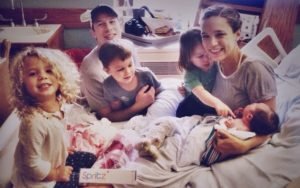Circumcision is a common surgical procedure with various benefits and drawbacks. This guide explores the key advantages and disadvantages to help you understand its implications.
Pros
1Reduced Risk of UTIs: Circumcision lowers the risk of urinary tract infections in infancy.
2Lower STI Risk: It reduces the risk of certain sexually transmitted infections, including HIV.
3Easier Hygiene: Circumcision can make it easier to keep the genital area clean.
4Prevention of Medical Issues: It can prevent medical conditions like phimosis and balanitis.
5Lower Cancer Risk: Circumcision reduces the risk of penile cancer.
6Partner Health Benefits: Female partners of circumcised men have a lower risk of cervical cancer.
7Cultural Acceptance: It is an important cultural and religious practice in many communities.
8Aesthetic Preference: Some people prefer the appearance of a circumcised penis.
9Reduction in HPV: Circumcision lowers the risk of human papillomavirus (HPV) infection.
10Less Inflammation: Reduced risk of inflammation of the glans and foreskin.
11Decreased Transmission: Can decrease the transmission of certain infections to sexual partners.
12Early Intervention: Addresses potential foreskin issues before they become problematic.
13Medical Recommendations: Some health organizations recommend it for its health benefits.
14Pain Reduction Technology: Modern techniques minimize pain and recovery time.
15Quick Procedure: Circumcision is a relatively quick and straightforward procedure.
16Increased Comfort: Some men report increased comfort without a foreskin.
17Common Practice: Widely practiced in various parts of the world.
18Reduced Odor: Can lead to reduced genital odor.
19Cost-Effective: May reduce healthcare costs related to foreskin-related issues.
20Infection Control: Reduces the likelihood of certain types of infections.
Cons
1Pain and Discomfort: The procedure can cause pain and discomfort during and after surgery.
2Risk of Complications: Potential for complications such as bleeding and infection.
3Loss of Sensitivity: Some men report reduced sensitivity in the penis.
4Ethical Concerns: Ethical debates about performing the procedure on infants without their consent.
5Cultural Differences: Not all cultures and religions practice or support circumcision.
6Permanent Decision: Irreversible procedure that may not align with the individual’s preference later in life.
7Surgical Risks: Like any surgery, it carries risks of anesthesia and surgical errors.
8Emotional Impact: Potential emotional and psychological effects on the individual.
9Pain Management: Challenges in effectively managing pain in newborns.
10Mixed Health Opinions: Medical opinions on the necessity of circumcision are mixed.
11Natural Anatomy: Some argue it removes a natural and functional part of the body.
12Parental Pressure: Pressure from family or society can influence the decision.
13Recovery Time: Requires a recovery period where the child or adult must avoid certain activities.
14Cost: The procedure can be expensive if not covered by insurance.
15Possible Regret: Some individuals may regret being circumcised later in life.
16Potential for Mistakes: Errors in the procedure can lead to long-term issues.
17Sexual Function Debate: Ongoing debate about the impact on sexual function and pleasure.
18Lack of Informed Consent: Infants cannot consent to the procedure.
19Alternative Methods: Non-surgical methods for addressing foreskin issues exist.
20Cultural Bias: Decision may be influenced by cultural bias rather than medical necessity.



